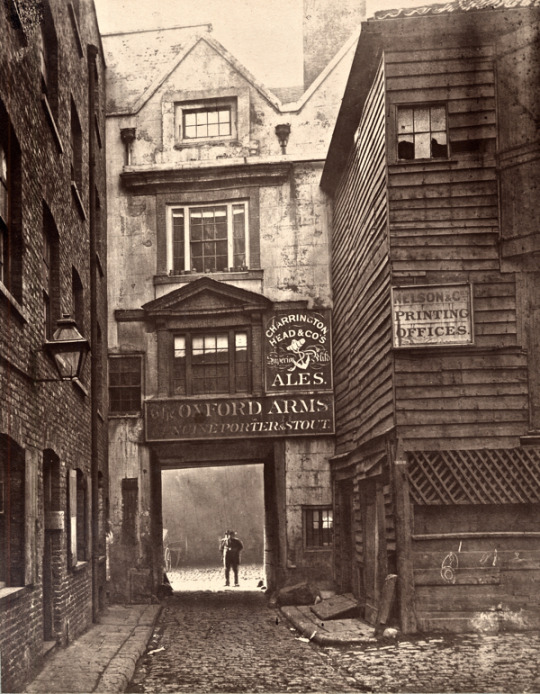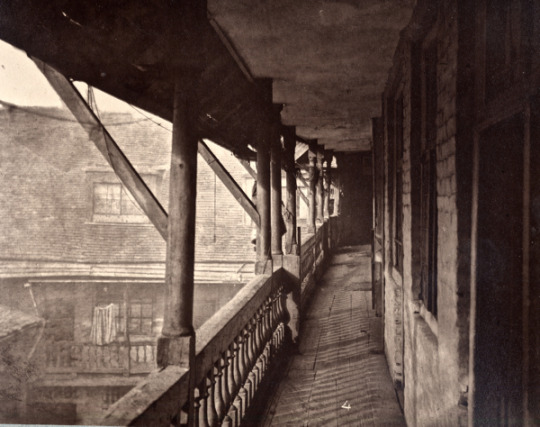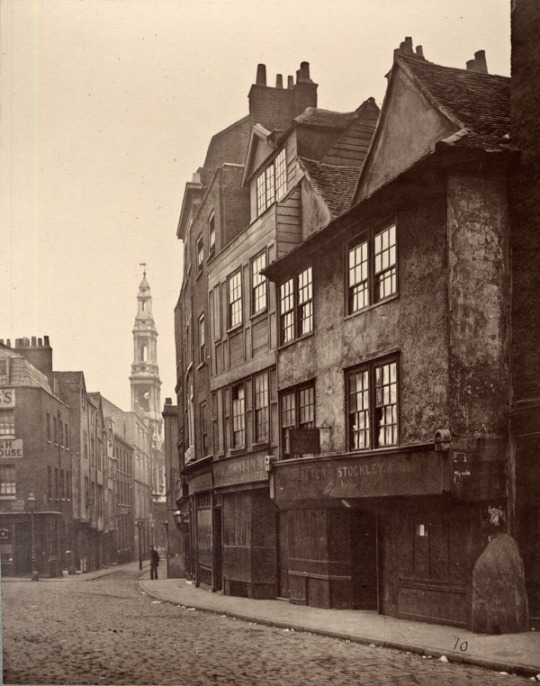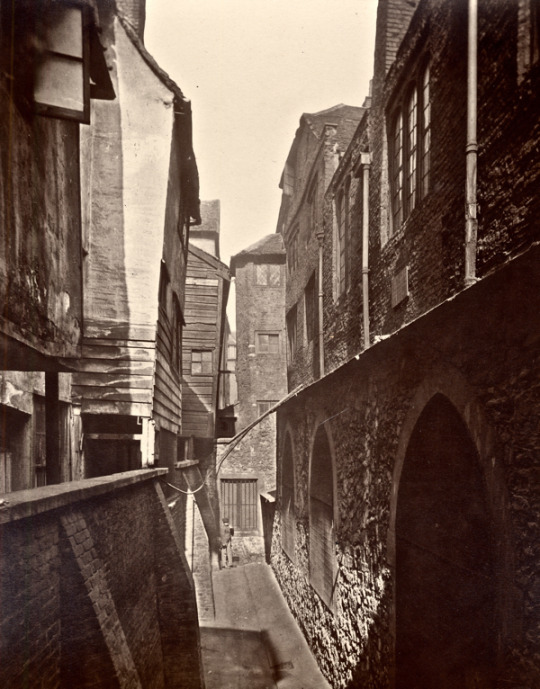Video
455 notes
·
View notes
Text
How to avoid gentrification
Make sure your city is a nice sensible place for grown-ups to have nice pleasant lives. Your city centre should be a neat and safe collection of shops, cafes and flats.
Make sure those gritty back streets and scruffy buildings are cleaned up, well lit and under control. The last thing you want is creative young people finding empty, cheap spaces to inhabit. They’ll only bring their friends and in turn the fashionable followers and their property investor pals.
If you have a gritty district of disused warehouses, beaten up streets, vacant plots and crime, sort it out. quick. This will have to become your Regeneration district. Get some nice bland blocks of apartments, a pleasant shopping area and some nice cafes. On no account let those hipsters inhabit the big old buildings. They’ll only bring the rest of the gentrification train with them. Ideally if those buildings aren’t inhabited by sensible adults, just demolish them.
That street where rumour has it you can get drugs and prostitutes and where there are a few edgy clubs, well that area needs to be tidied right up. Repave the street, clean the buildings, plant flowers and trees and introduce restrictive licences to get those clubs to close before midnight. Clubs are exciting and we know what that means - young, creative people will come and following on their heels will be gentrification.
So, clamp down on that affordable, unregulated old building stock. Its a gentrification magnet. Make sure that your local band of dull planners and city council leaders intervene as much as possible to make sure everywhere is nice and that there are no ‘edgy’, gritty places left.
if you follow these instructions your city will remain pleasant and all those dreadful hipsters will never even notice its there.
I once knew a gap-toothed city. It was scruffy, messy and chaotic. Lots of strange, untidy business went on in it. It looked a bit of a mess. Then the council decided to regenerate it. It had a facelift, and its characterful teeth were straightened. Now no-one even notices it now.
21 notes
·
View notes
Photo

I made this at work while thinking about the negative space between buildings on the skyline. That space is visible to everyone, and constant, but never seen. If you look at this picture upside down you can see the future. And if you look at the stars you see the past. Pretty eh. It’s for sale on eBay.
1 note
·
View note
Text
10 signs that you are suffering from Information Poisoning, and how to overcome it.
1: Having a short attention span and finding it hard to concentrate
2: Difficulty resting or sleeping through the night
3: Feeling lonely or disconnected when not online, or when you’re in your own company
4: Racing or disjointed thoughts
5: Feeling anxious and stressed
6: Feeling powerless, or unable to make a difference in the world
7: Feeling a pressure to know everything, or something about everything
8: Compulsion to check your smart phone, or the Internet in every spare moment
9: Not enough time to do the things you enjoy
10: Being highly critical of yourself and your life
A day in the life of someone suffering from data poisoning would look a bit like this:
You wake up after a night of broken sleep interspersed with worry and disjointed thoughts. You roll over and switch off your phone alarm and through bleary eyes you check the news headlines and your social media. You put on the radio or TV and get ready for work while listening to stories about war abroad, infuriating politics at home, and other upsetting stories, followed by some sport and some music.
You head out to work and on your way you pick up a free paper or magazine. You’re confronted with all the worst news of the day from home and abroad – things that make you feel sad, powerless and depressed at the state of humanity, then you read some funnies and something about the latest mind boggling science… and a bit about business and what’s hot to be seen in this week. You might also have compiled a mental shopping list of home furnishings, music, clothes, hairstyles and things going on that you should probably try to see or do.
You get into work and try to focus, but in the gaps you fit in a bit of Twitter, a bit of Facebook, a bit of Whatsapp and a bit of news. Your friends seem to be on holiday, or having a party despite a lot of them also being on Facebook at that minute. Your lunch break is spent eating while browsing the internet, following a train of thought that leads you to Wikipedia via Twitter then to Buzzfeed.
On your journey home you pick up the evening free paper for a reminder of the planet’s worst news and most unfathomable technology and science news. You read all the adverts around you when you’ve finished scanning the news and you compare yourself to the other people on the journey.
You get home and slump down for some Facebook chat with a couple of friends, while the TV is on in the background before collapsing into bed with a book… that you’ll start reading once you’ve done a little more Tumblr, a bit of Pinterest and a bit of Twitter, a read a little more news about war, murder, cruelty, LOLs, pollution, climate change, habitat destruction, millionaires and billionaires… You’ll write that novel or go jogging tomorrow.
Our data diet
We’ve started to understand the effects of what we eat and what sort of exercise we do on our health. It’s common knowledge that junk food, snacking, missing out on nourishing meals and not getting enough exercise makes us unfit, tired and overweight. Our physical health is pretty important to us. Not so many people have a proper understanding of how our mental diet affects our mental health and well-being.
Today, our mental diet has never been so varied, and we’ve never had so many things to try. Information, is so plentiful and free that we can gorge ourselves on delicious junk data. We can snack on it throughout the day and get so full of junk that there’s no time for a nourishing book or full album. There’s also not much time to relax, be peaceful, or to do those things that bring us real joy and make us feel great. We spend too much time feeling exhausted as we process the huge amount of data we’ve consumed.
We’re surrounded by data pollution which is unwanted scraps of information pushed down our throats from adverts and overheard news stories. We also produce and share a lot of junk data on social media. The only difference is that when you share on social media, you’re making someone else fat – primarily the CEOs of social media companies.
Data gorging is followed by data hunger. We are never satisfied by junk data – we have a constant craving for more information (1) . We need to know more so we’ll never be lost in a conversation or out of the loop, and we fill our spare time gobbling up headlines and morsels of info which we can feed back to our hungry friends.
The end result of all this is data poisoning where our hungry brains become sluggish, and fat. And it doesn’t feel good. Our thoughts swim with ideas and information which can lead to anxiety, stress and confusion. We find it hard to sleep and often wake up worrying or thinking. We also feel powerless to change the world which feels like a conveyor belt of bad news. Actually that conveyor belt is the product of the data industry. It churns out the same flow of information every day and makes us think that the world is a certain way. It isn’t. You can make a difference, you can feel peaceful and happy, and you can still enjoy information. Here’s how:
Overcoming Data Poisoning and Data Detox
Welcome to the idea of going on a data diet, or a data detox. This is where we give up that junk data that’s bad for our mental health and replace it with nourishing, intelligent information meals. Proper information meals will build your brain as a muscle rather than as a store of fat, and in between these satisfying meals you’ll have time to live your life to the fullest.
1: Buy a simple alarm clock. Turn off your smartphone, computer and tablet at least 3 hours before bed. Let your new alarm clock wake you up. Get ready for the day listening to music, or a quality radio station. And only later turn on your phone. Only share your evening with real-life friends, a partner, or have some relaxing ‘you-time’.
2: Grab that book you’ve been meaning to read, and instead of taking a free paper, read your book on the way to work. You’ll be filling your brain with a properly paced and nourishing story that will stick in your memory, instead of series of quick, unrelated and forgettable articles. And, never walk and tap!
3: Get used to turning off your phone. Put it somewhere out of reach so that you can’t just grab it in every quiet moment. This will stop you from being distracted by data when you’re trying to concentrate on something else. Give your concentration muscle a work-out
4: Consider buying a retro non-smart phone and put your Sim-card in it for daytime use. That way you can take calls and texts. Leave your smart phone at home - your friends will all still be there when you get home.
5: Swap low quality communication with high quality communication. You can exchange so much more information, feelings and thoughts on the phone or in person than you can in a chat box, or in texts. Call your friends and family on Skype or on your phone and talk about your day, instead of having a long Facebook or text chat. This will help exercise your conversation muscle and make you more lucid.
6: Never check your phone when you’re out on a date or with friends, even if they’ve gone to the toilet. Instead, people watch, look out of the window… anything that keeps your mind on the person you’re with and the place you’re in. This will make you seem more interested, interesting and lucid, and you’ll have a better night.
7: Have a data detox. Go on holiday without your smart phone. Everywhere you stay will have the internet anyway, but during the day you’ll be able to really enjoy the holiday. If you’re on social media or home news channels, you won’t really be on a break. Try to resist the urge to share what you’re doing on social media – be aloof and mysterious – it will be much better for your image and your well-being.
8: Avoid adverts. You definitely don’t need to know anything they’re telling you.
9: Only one data source at a time. Or, only one screen at a time. Stop watching movies while writing a blog. Stop watching TV, using Tindr, and chatting on Facebook at the same time. Etc. One at a time.
10: Swap low quality data for high quality. Choose to read a novel rather than an article. Choose phone calls over facebook chat. Write a blog instead of a tweet. Read wikipedia instead of buzzfeed. Go and see a play or a film at the cinema rather than gobbling up a whole series on netflix. Read a good quality newspaper instead of a free one. Listen to a quality radio station instead on a commercial TV channel. Go for a walk, a bike ride or go on a run instead of going online. Enjoy moments you have alone – they’re rare and valuable.
11: Be aware of data pollution and learn to recognise information that is bad for your health. Understand that when you are overwhelmed with data you won’t have time to live your life to the fullest. And spread the idea to people you care about so that you can liberate them too. Good luck
#information#pollution#wellbeing#health#stress#anxiety#sleep#smartphone#relaxation#meditation#life#food#diet#psychology art design
2 notes
·
View notes
Photo
Fascinating but bloody awful
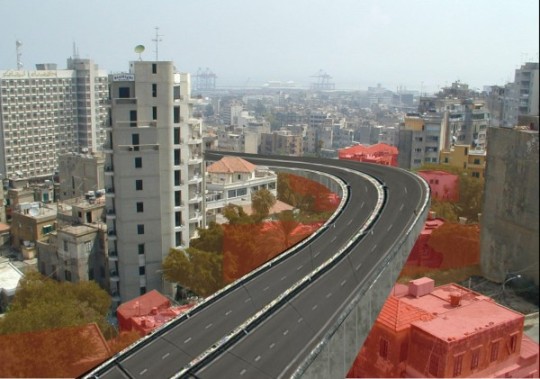


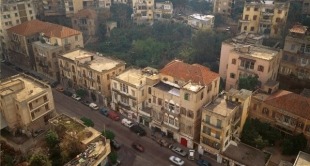
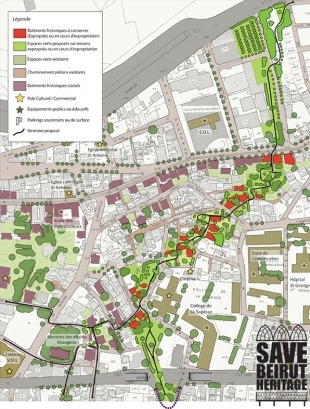
Beirut Plans Urban Expressway That Would Make Robert Moses Proud
Getting from one side of Beirut to the other normally takes about 15 minutes. Rush hour, on the other hand, is an entirely different story. With around 2 million people working in this 20-square-kilometer city, with its joke of a public transportation system, a trip across town during the morning rush can take over an hour.
Earlier this year, in an effort to alleviate the congestion, Beirut’s Council for Development and Reconstruction (CDR) proposed an initiative. It wasn’t a plan to resurrect the tram system that used to efficiently connect the city’s neighborhoods, or to revive the railway network that once ran trains east to Riyaq and north to Tripoli. Instead, the proposal called for an intercity highway — a plan for traffic easement straight out of a 1960s urban renewal playbook.
In this case, quite literally. The plan for the Fouad Boutros Highway was hatched half a century ago, calling not only for an elevated high-speed roadway, but also 700 new adjacent parking spaces. Save Beirut Heritage, an NGO focused on historic preservation, has argued that the highway would run right through some of the few traditional neighborhoods still intact after years of Lebanon’s civil war. It will “puncture the continuous street facade,” and “the perspective of the street will be blocked and disfigured by the huge concrete mass of the overpass,” the advocacy group concludes. All in all, the group estimates 28 heritage landmarks will be destroyed, and the traditional Ashrafieh, Hekmeh and Mar Mikhail neighborhoods of Beirut will be forever changed.
“What is now a slow paced neighborhood, free from fast, congested and heavy traffic, will be invaded by fast cars and strangled by traffic congestion,” Giorgio Guy Tarraf, cofounder of Save Beirut Heritage, told Iloubnan.info.
The highway would cut through some of the last traditional neighborhoods left in Beirut.
Moreover, the highway will cut through some of Beirut’s best public green spaces in an overdeveloped city already starving for more parkland. The kicker, according to a report written by Wajdi Ghoussoub, a member of the Democratic Renewal Movement’s youth branch, is that building a highway in the middle of Beirut would do little to ease the burden of traffic. “There is ample evidence that intercity highways do not alleviate traffic,” Ghoussoub wrote in a policy brief.
Nevertheless, work on the highway is moving forward. It’s expected to last 2.5 years and cost $60 million — money that could be spent upgrading the city’s rickety mass transit infrastructure. Today the only public transportation options are private buses, vans and an armada of taxis that clog the roads. Most Lebanese who commute in and out of the city still drive their own cars rather than carpool or use transit.
The CDR, the party responsible for updating and reconstructing Beirut’s transportation infrastructure, reports directly to the Lebanese council of ministers, and its task is enormous and multi-layered. Which is why Ghoussoub believes that Beirut needs a separate council that would be responsible for “funding a mass public transit system” for the city. Other priorities for the council would be to reactivate the railway system in and around Beirut, and upgrade or establish ports in other coastal cities to decrease truck traffic in and around the city.
An alternate plan put forth for a string of parks was rejected.
These days, in the absence of meaningful public transportation, many Lebanese use a shared taxi system for which they use the French word service, in which privately owned taxis stop to ask customers where they are going. If the customer’s destination is on the taxi’s regular route, the driver will pick them up and charge them a fee of 2,000 LL (about $1.33). If not, the charge is 10,000 LL (around $7.50). Other Lebanese have tried to take up riding bicycles, though Beirut doesn’t have dedicated bike lanes. Cars often park on sidewalks, making it hard enough for pedestrians to get by, let alone bikes.
Despite the obvious need for more people-oriented transportation infrastructure, the activist pushback against the highway remains a rigged fight. In a city like Beirut, developer interests often trump the public good.
“Rethinking of intercity highways is a multi-decade process that needs to start immediately,” Ghoussoub wrote. Whether it will start with this particular project remains far from certain.
Photos and renderings courtesy of Save Beirut Heritage
2 notes
·
View notes
Text
The paradox of urban perfection
We can’t help ourselves – when we see something unattractive in our cities we want it gone – it must be made more beautiful / more contextually sensitive / newer / cleaner. But what happens when we reach perfection?
The ability to recognise urban flaws and the will to correct them has generally now slipped, in an over-simplified form from the passionate few to the mainstream – mayors, policy makers, politicians, planners and the public all have an understanding of basics of urban design. It’s now much less likely (in Europe at least) that a wayward developer will be allowed to block an important route with an alien monstrosity, or that a treasured historic building will be razed to build a shopping centre. This is all excellent… except for the little problem of completionism. This is the collective desire of city builders to aim for perfection. Completist urban perfectionism is also most problematic in those cities with money to express it.
Cities are dynamic, living organisms, they can’t be completed, but occasionally some seem to get there. They’re quite popular and are often designated by UNESCO as a perfect example of their kind, not to be altered. They are common in Europe but can be found all over the world. They usually have an ‘old town’ which is where the paradox of perfection can be so painfully enjoyed. These towns have beautifully and immaculately cobbled streets, flawless historic buildings free from interference by anything modern or unsightly. They have an immaculate central square ringed by neat umbrellas and are populated by tourists sunning themselves and drinking local beer. Horse and carts and little golf carts with multi language, pre-recorded guides offer tours of the old streets. A local in costume plays an accordion, someone else stands motionless unless activated by a coin in a basket… the locals stay well clear of the whole thing and the tourist has a curious secret longing for a brutalist concrete carbuncle.

This globalised idea of an historic old town has spread like a virus into the minds of local planners. Any sign of imperfection – the dark alley, the concrete experimental building, the old street surface, the shabby old roof tiles – can now be identified by everyone and eradicated. No thinking necessary – it’s a no-brainer. Except everywhere you find them, they’re the same. Places are becoming homogenised and generic, and as a result they are becoming dull, unexciting and sterile. For a start, the city’s old town has never, until recently been an antiseptic, fully restored and polished place. In the past it was constantly changing, untidy, noisy and smelly. It was full of all the danger, vice, excitement, as well as beauty and wonder that a city had to offer. They were always magnets for travellers but offered a lot more than cappuccino, cold lager, a state funded art galley, and branches of upmarket fashion brands. In becoming museum cities, these places are losing their urban thrill, their relevance to local people, their idiosyncrasies and their appeal.
Modern cities and districts are facing the same paradox and in wealthy cities the processes are vastly accelerated.
London has become united in its aim to homogenise. Planners have learned about the basic concepts of urbanism. And without any deep understanding of the complexities and conflicts involved in the loose guidelines of urban design, have interpreted them to mean ‘control everything’ and ‘work towards gentrification’. Principles of urbanism are applied clumsily and the result is increasingly the application of a very generic, safe and global vision of urban. New districts are taking shape across the city which have all the beauty of a computer visualisation, and the thrill of a shopping mall. These new mixed use districts are populated by photoshop characters – the slim woman with the shopping bags, the businessmen conversing, the young lovers holding hands.

These are certainly not places for anyone who’ll shatter the globalised dream of the safe and pleasant city. These, often private estates ensure that no ‘undesirables’ can enjoy the place – there is nothing here of use or within the budget of the less well-off. There is nowhere for the skateboarder, the Big Issue seller, the illegal busker. There is nothing to see besides safe art and cultural events agreed around a boardroom table. The can of lager is banned from the streets. How democratic and yet not. There is unlikely to be any space for the workshop or for ordinary people to live. In London many new apartments remain vacant – bought off plan by international investors as kept sealed as they accumulate value, like works of art. Or, they are occupied like sealed fortresses safely elevated from anything resembling a real city. It makes you wonder if many of these new urban inhabitants actually like cities at all.
The smart granite paving and the carefully designed benches that prevent sleeping, skateboarding or lingering spread. The architecture designed internationally for the international appears in every aspirational city. The delicate buds of artistic or creative enclaves are designated as such by planners, and repaved, and branded with banners, and moved into by middle-class families, the illegal identifiers of sub-cultures are preserved in law and given fresh licks of paint.
Everywhere becomes safe, standardised, beautiful and dull. The cycle continues… cities fall in and out of fashion, they boom they bust. They are made and remade. Districts fall into disrepair and occupied by artists who are forced out by the fashionable. London rises, London falls. Old cities are demolished, missed and later rebuilt. Places are completed and they feel incomplete; cities are perfected and become imperfect; they are made beautiful and feel ugly.
17 notes
·
View notes
Text
Have we resigned ourselves to this urban future?
Bruce Sterling's vision of the future city:
In 2050, the Earth’s population is expected to hit 10 billion, and 75% of those people will live in cities. As our urban environments grow and grow, how do we make sure that growth is sustainable? In the coming weeks, seven experts will looks at ways cities may be able to cut lessen their impact and build a more sustainable future. To begin with, award-winning Canadian science-fiction author Bruce Sterling presents a cautionary view of what the sprawling cities of 2050 may look like.
Imagine a city of the future. Do you see clean streets, flying cars and robots doing all the work?
How does it look-and-feel, the big, grand city of the mid-century? If you're seven years old, everything in it feels equally wondrous. The big city is a riot of sight, sound and smells – as vivid, exciting and scary for you as any big town has ever been for anybody.
No one can overlook buildings of that colossal size – but why do they exist? A city's showplaces are always built by people anxious about their own status. In 2050, the nouveau-riche arrivistes stake their big skyline claims on the public eye. That glassy, twisting spire, as gaudy as any Christmas ornament, is owned by offshore Chinese. The gloomy tower with 85 stories of modestly greyed-out windows is an all-female enclave of Islamic business feminists. The scary heap that resembles a patchwork quilt of iron was entirely crowd-sourced.
Cars piloted by human beings were a passing thing in the ageless urban story. The urban highways are still there – far too many of them, all old – but it's network-driven robot cars, like smartphones with wheels, that deliver the payloads now. The traffic signs and signals are long gone, since machines don't need them. This city never stops – the wheeled machines flow night and day through every intersection, busy as ants, silent as eels.
There's no urban smog, but the city reeks. This dense, greenhouse stink is composed of the rot from flood damage, the decay of dead lawn and parks, and bursting, sneezy clouds of weedy pollen from invasive species. At the seashores, the great, flood-stricken port cities of the past smell like dead fish and invasive brine. This fetid greenhouse fever doesn't smell much worse than the urban smog that brought it into being. People are used to it.
Urban cats are everywhere, since people much prefer pets to children. The "human bubble" has reached its downslope. The old Population Bomb is now a rubble-clearance project. The cats are meticulously tracked by surveillance collars, and they never stray.
The same goes for the elderly. The old have become mankind's majority, for now and apparently forever, the avant-garde of the urban machine-for-living. The old pay well for their dignity, for the always-on augmentation and the ubiquitous computing. They pass their endless twilight days in padded penthouses, half spa and half life-support module, urban spaces so intensely surveilled that one will never lose a button or drop a lit match.
Modern cities are elderly, too. Brick and stone are mortal, and entropy requires no maintenance. Every major urban industry leaves its silent retinue of dead smokestacks. The early 21st Century left a rich heritage of quaint, gentlemanly rubbish: the archaic cellphone towers, the poisonous and horrifying fossil-fuel plants, the squalid paper-shuffling headquarters of extinct government bureaus. Commonly, this is where the cities stuff the climate refugees.
The poor we always have with us, because somebody is always in the business of keeping the poor that way, and the poor can always be relied upon to rob and oppress each other. The great city of the future has slums. It has red-light districts. It has pawnshops and sweatshops, and parlours for the various illicit substances that used to be called narcotics. The big city is the wicked city. No big city has ever lacked for wickedness since the time of Ur of the Chaldees. A city that failed to generate some enticing crimes would have to invent brand-new ones.
With all its timeless continuities, the mid-century metropolis does have novel and startling aspects. Ever since their invention, cities were elite barns for the sturdy peasantry of some fertile countryside. The mid-century city has created means of food production that are post-agricultural. With swordfish extinct and cattle way beyond the budget, the people eat – well, to put it bluntly, they mostly eat algae, insects and microbes. Of course this tasty goop has been effectively refined, rebranded, and skeuomorphically re-packaged as noodles, tofu, and hamburger substitute. Soylent Green is crickets. Every urbanite loves to fuss about fine dining. The upside of a major climate crisis is the prospect it offers to entirely liberate cities from their sordid heritage in the planet's soil. A space colony is just a Dubai-style super-tall desert skyscraper – plus some zero-gravity bone depletion. A lunar colony is just a London mogul's subterranean basement, without the crusties or the labour strikes.
The urbanites in the mid-century city know that they are not the culmination of the city. No one's idea of utopia, they're not even "modern". Everybody under 30 years of age is instinctively convinced that they are the cultural radicals, the cool and daring pioneers, the youthful froth of a tsunami of some radically different way of being – and indeed, they are. Not "better" mind you – just different.
There is fear in this mid-century city. Life is frail. A vengeful super-hurricane might cross the simmering Gulf Stream and fall like an avenging angel on the coasts of Europe – but people can get used to that. Megastorms aren't that much worse than Los Angeles on a fault line, Naples on a volcano.
The scary part is what people find within themselves, when their city is gravely harmed. People can flee with relative ease, but cities are tender and sessile beings. When the survivors return to their beloved rubble, they find themselves forced to create another city – one that makes genuine technical sense under their circumstances.
Only engineers and architects will ever rub their hand at this dreadful prospect. These modernists are in secret collusion with the feral urban crows and hungry pigeons picking over the blast zone. For years, while a sentimental mankind clung to a museum economy, they have rehearsed another city, some angular, rational monster with an urban fabric that's a whole lot more nano-, robo-, and geno; buildings they can shape, and that will henceforth shape the rest of us.
To tell the truth, we never liked that city. But it just keeps happening.
#city#urban#future#design#forecast#environment#machines#robots#cars#pollution#change#green#skyscrapers#architecture#technology
8 notes
·
View notes
Photo
Beautiful work emerging soon from Mark Lascelles Thornton.

81 notes
·
View notes
Text
Oh, Tenerife, how lovely you'd be if you'd never been discovered.
I'm not the sort of person who'd visit a volcanic island in the Atlantic to sit on a beach beside a plastic resort. As The Canary Islands are famous for tempting unhealthy British people to all-you-can eat stacks of balconies overlooking a toxic shade of blue swimming pool, I decided that there would be nothing for me in any of the settlements. Instead I headed for the most remote hostel I could find, on the edge of strangely tourist free village. It turned out that this was because it was situated beneath the only permanent rain-cloud in the whole ocean (besides the one over the UK) - not perfect considering I was there in an emergency effort to generate some vitamin D.


Tenerife, it turns out, is a jaw-droppingly stunning volcanic landscape. It has unique layers of distinct climate and vegetation that creep up the mountains from desert to cloud forest and through landscapes that look alternatively Mediterranean, lunar, Amazonia and even, briefly so northern European I could have been on a damp footpath in Derbyshire.
And then there are the bits built since the modern era began. To be fair I should confess I was only there two days. One of which was spent hiking up a beautiful mountain with nothing but the complex and wonderful richness of nature around me, and the other was spent cursing the local bus service and being amazed at the hideous and dysfunctional Santa Cruz and motorway collar that wraps the entire island.
To be fair again, I had a pleasant day in the airport garden. They had some very nice cacti. Also the villages and untouched settlements were complex and organic and evolving colourfully. Santa Cruz though... Oh God. what a horrible place. Specifically, the new part with its Calatrava designed thing.
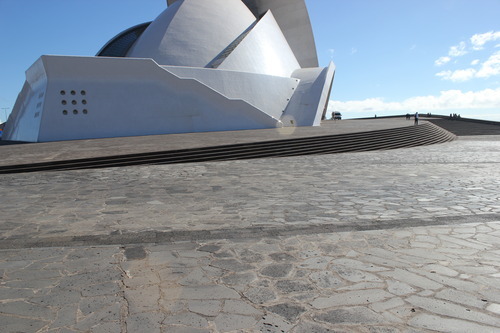
This thing, ok, it's like a 90s paperweight scaled up to the size of a space station and them crash landed into an area of crazy paving so vast than anyone disabled or elderly would probably never make it across. There is nothing in the crazy paving area. It just stretches from the urban motorway to the sea and then has this object sat in the middle. One solitary experience for half a mile. You can get that experience if you stand in the vast bus station and look over at it... the experience doesn't change as you get nearer. A mono-experience. Yawn + tired feet.



In order to get to the object you might try one of the boulevards that head promisingly towards it. You would then find the road, suddenly, ended at a sewage works / wasteland. Make your way around that and cross a 6 lane motorway with no pedestrian crossings - Yes, this is the only way to get there - and you're there. the thing is larger, but essentially exactly the same. Many minutes later you will arrive at its base. there will be fashion shoot going on and a few people milling about thinking they should be taking photos of it. They will certainly be the most boring photos from their trip.
Essentially, the bits of Tenerife that have been planned by architects and town planners are one dimensional, desolate and dull. There is more to see in a 10 metre walk along a winding street of an old village, that has been built by locals over many years, than there is to see in an afternoon in a resort or a modern part of a big town. Its almost as if planners and architects don't know how to build habitats for people... almost as if.
Lessons on how to build human habitats:
1. Grand architectural statements are like a small experience such as looking at a rock, but scaled up to the size of an ocean liner. A town that has been developed naturally over time, by people is 1000x richer in terms of experiences available than the modern statement part of a city that has been planned.
2. new streets or boulevards are extremely boring mono-experiences. however if they don't connect up to anything they are nonsense - a dirt track with a weeds growing in it would be infinitely more interesting but sadly such a thing would bring great shame upon the city's planners and must not be allowed to exist.
3. We should probably look after the bits of our cities that developed organically. Planners and designers cannot recreate the perfection, complexity and depth of these places - Just as we couldn't reproduce a human body with plastic as much as we like to have a go.
#tenerife#nature#mountain#city#urban design#Architecture#santa cruz#urban#modern#design#development#rain#forest
0 notes
Text
hi
Hi there, Nice blog, I just wrote about a couple of your interesting posts - http://jasonie.blogspot.co.uk/ - keep it up! J
0 notes
Photo
Well, as no-one is using them as telephone boxes any more, and there aren't enough places to sit in London, I can see a way to solve these two problems.

Box Lounger by Benjamin Shine
963 notes
·
View notes
Photo
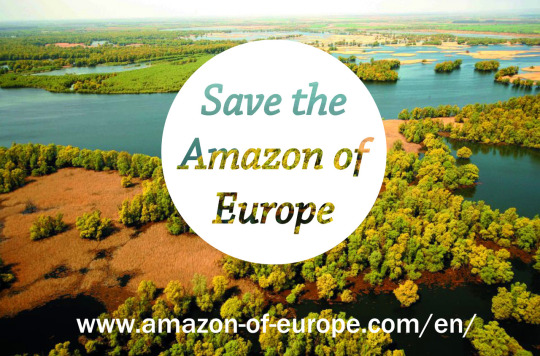
#environment#forest#jungle#europe#nature#danube#climate#croatia#serbia#green#wood#river#water#wildlife#birds#heritage
2 notes
·
View notes
Photo

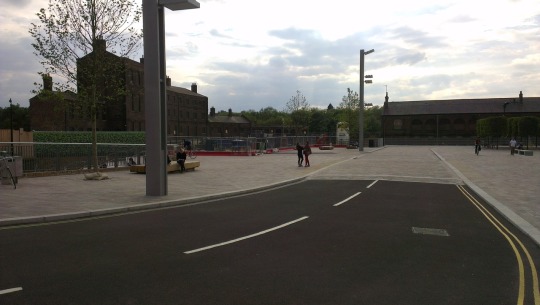


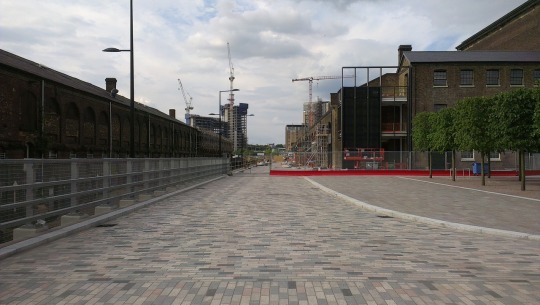
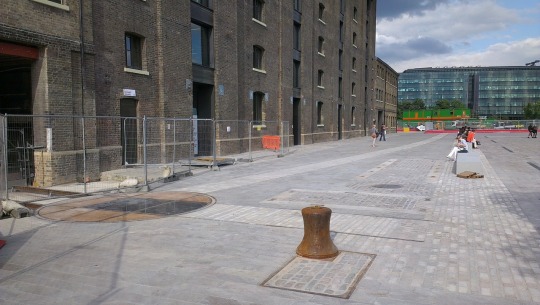


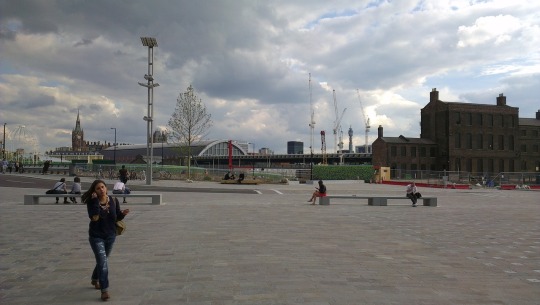

Now that the square has been decorated with picturesque arty types from the isolated creative ghetto of the new St Martins college, the square looks a bit like its promotional renders - all that's missing is that woman in shades with the shopping bag. It's also important to note that the greatest concentration of stationary people was around the side of the college - in a more intimate and better enclosed space, by the bike storage and outside art installation shed.
The most enjoyable thing in the square, for me, is how close you can get to the two beautiful old warehouses and the sheds. One warehouse sits on the very edge of the canal creating welcome enclosure and human scale on the south side. The other is the imposing hulk of the Granary warehouse which has been left beautifully dark with its patina of age and character in tact.
Camden council is very pleased with itself in having managed to adopt the roads through Kings Cross and the square. So, if you want to protest about something, sell a Big Issue or generally behave in a slightly non-CGI render sort of way, these adopted highways are where you must stand. Stand anywhere else and you risk the management team, who'll be excited by their new responsibilities, running towards you to shoo you away. This is because Kings Cross is a huge private estate. This might also explain why there are only about three or four ways into the masterplan area, and so many opportunities to link it to Camden town in the west or Islington to the east, have been (purposefully) missed.
I enjoyed the steps and amphitheatre leading down to the canal side. Nothing more enjoyable to look at than people on bikes, and the water. Fingers crossed they don't try to use the working tow path as a stage though, or there will be disasters.
It was also nice to see a few old lumps of iron and railway tracks in the paving, although I'm sure there must have been more heritage around here that could be on view.
There is a little grove of trees off to one side of the square while most of the space has embedded fountains across it. While the grove is pretty, and the tables underneath very in vogue ( good though ), they have been stuffed to one side to make way for a vast expanse of stone - Maybe there is a profitable load of events planned for this space.
Overall, I can't wait for the other old buildings to come back into use. I hope their scruffy charm will be kept and bricks will be left soot covered. The square is pretty good too. I look forward to awkward protests taking place on the quiet publicly owned streets.
3 notes
·
View notes
Photo
How is this the only decent example of this in the world? London Underground could do with a few of these. Westminster and its half mile deep pit could certainly accommodate a few slides.
Most people in London spend half their commute shuffling down a maze of stairs and escalators. Think this would cheer things up no end, although knowing the British it would all be conducted in a restrained and businesslike manner.

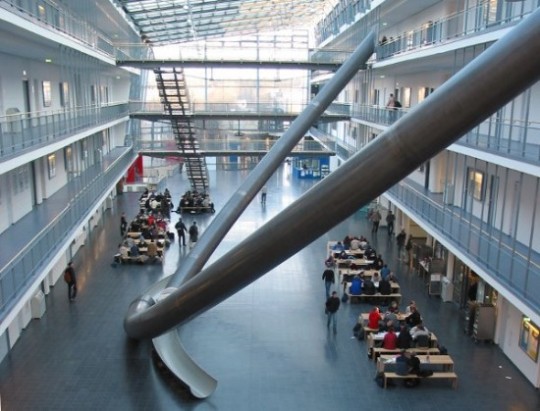
4K notes
·
View notes
Photo
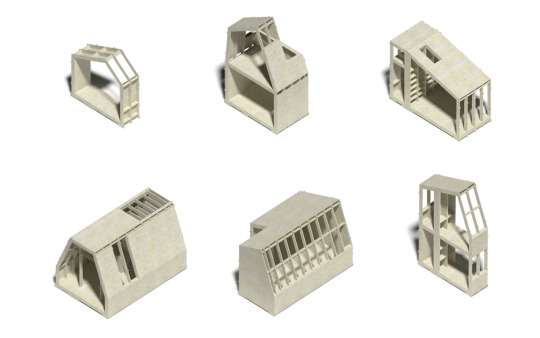
Open source contruction set from wikihouse.cc / twitter.com/wikihouse
Think of this before buying a house from Barratt's
( Brought to my attention by the very clever blogger http://letzterkunstgriff.wordpress.com/ )
0 notes
Photo
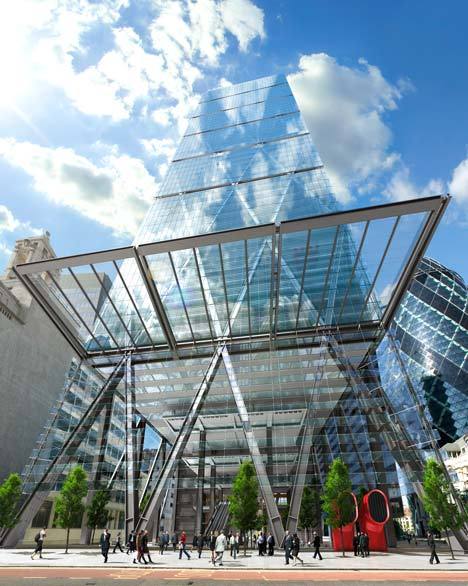
One of the excellent ideas included in the City of London's newest skyscraper is that the ground level will be a large public space. But as is the way with most major applications, many of the generous ideas or best design features get scrapped right at the last minute.
I'm worried that various fears about perceived security threats are going to result in some late planning applications to change the 'public' space at the bottom of the building into a secured private space.
I think it was always inevitable, but bollards have appeared in later renders of the base level. No doubt these will be vehicle proof, and encircle the building to deter any ambitious mobile bomber. I don't know why such things are left off the original planning images when everyone knows they will happen. It is simply deceptive.
I'd be amazed if the space was even remotely public in feel. Security will prevent photos being taken in the space as is the way with all private 'public' spaces within buildings. Look no further than the generous 'public' space under Foster and Partners' Tower Place next to the Tower of London. If you try to take a photograph there, security will actually run towards you to stop you.
I also wouldn't be surprised if one or two controlled entrances were set up along a new perimeter to allow access into the space. Again, someone will raise the security question and insist than anyone entering the space is checked for explosives or guns. I imagine airport style security gates will be installed for public visitors and swipe cards will be used for office workers.
If this ends up feeling like a truly public space, as is shown in the visualisation above, I'll eat my hair. Although I hope I'm proved wrong.
#london#leadenhall#tower#richard#rogers#city#urban#design#planning#security#skyscraper#London#architecture#public#space#square
5 notes
·
View notes
